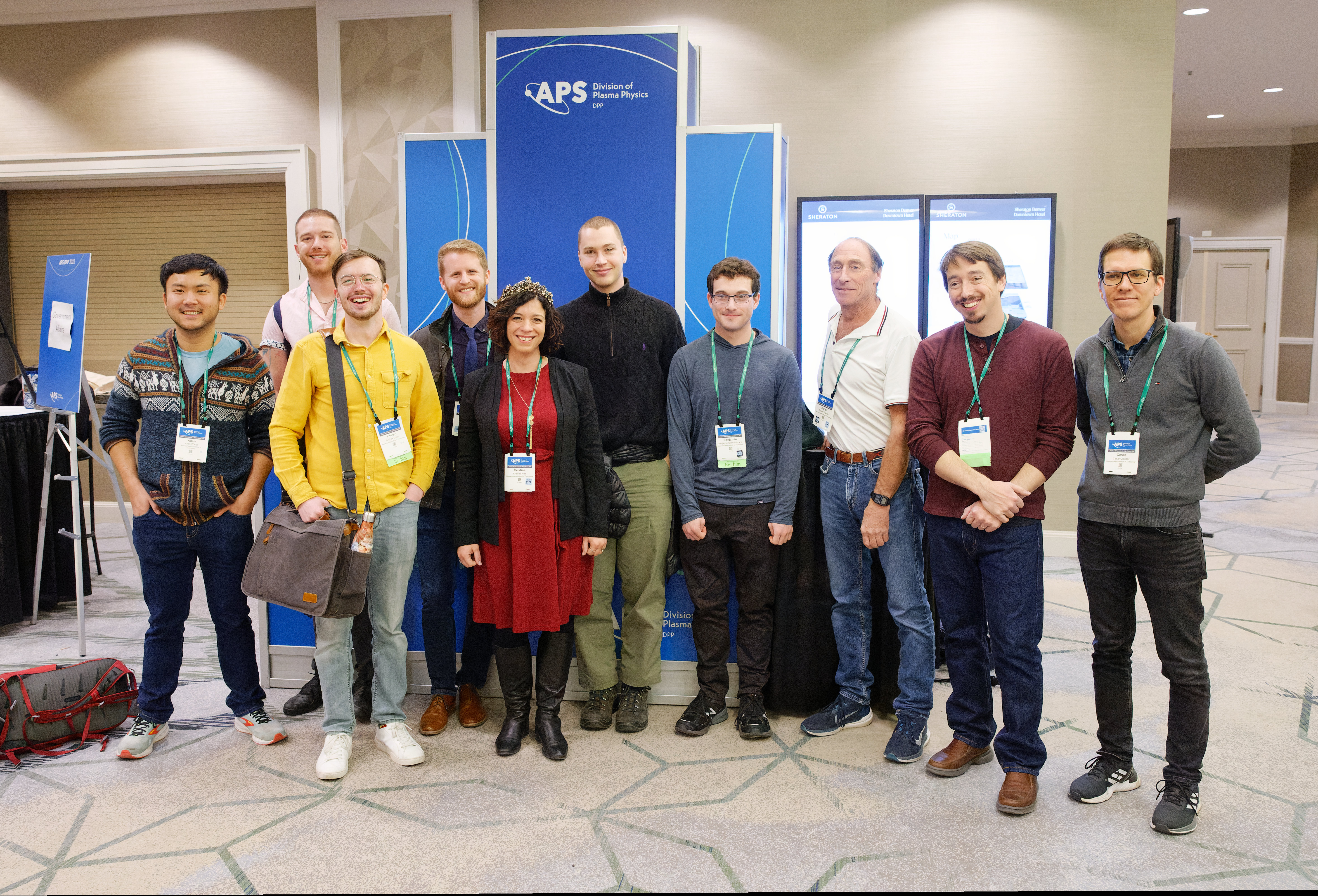Disruption Research at the 65th APS Division of Plasma Physics meeting
Topics included research on the Q > 1 milestone for the first SPARC campaign

The 65th Annual Meeting of the APS Division of Plasma Physics took place in Denver, Colorado, from October 30th to November 3rd, 2023.
A significant contingent from the MIT PSFC Disruption Group actively participated in the conference, making valuable contributions through a range of oral and poster presentations.
Research progress related to SPARC was prominently featured across several presentations. In the MFE: SPARC Tokamak and High Magnetic Field Devices session, four talks were delivered by scientists Bob Granetz, Alex Tinguely, Gregorio L. Trevisan, and graduate student Ben Stein-Lubrano. Topics covered spanned fusion gain measurements for the SPARC Q > 1 campaign, radiation modeling during disruptions to inform SPARC bolometry design, understanding Maxwell’s equations properties to accurately inform SPARC equilibrium during transients, and exploring the potential of high-Z triggered disruptions in machines with metal walls.
In the MFE: High Field Tokamaks poster session, group leader Cristina Rea and CFS disruption scientist Ryan Sweeney led a series of contributions discussing active disruption research and strategies for the Q > 1 campaign. The PSFC disruption team members authored more than 10 posters presented during this session, with a strong focus on machine learning techniques to enable disruption research.
Beyond SPARC research, principal scientist Bob Granetz, along with NSE graduate students Andrew Maris and Zander Keith, presented contributed posters in the MFE: Stellarator session. The discussion focused on disruptions’ phenomenology and radiative collapses consequences in the 3D stellarator configuration. Additionally, graduate student Andrew Maris presented a poster in the DIII-D session on a data-driven stability metric for density limit disruption dynamics, derived from a multi-machine database study. AeroAstro graduate student Allen Wang gave a contributed oral presentation in the MFE: MHD, Control, and Machine Learning session, discussing optimization techniques for ramp-down scenario design and active disruption avoidance, relevant to the SPARC tokamak.
For more details on the various contributions, refer to the table below. The complete scientific program is available on the APS-DPP website.
| Presenter | Title | Session |
|---|---|---|
| RS Granetz | Comparison of high-Z triggered disruptions in metal-walled tokamaks | NO05.011 |
| B Stein-Lubrano | 3D Disruption Radiation Modeling and Considerations for SPARC Bolometry Design | NO05.012 |
| RA Tinguely | Measuring fusion gain Q > 1 in SPARC | NO05.006 |
| GL Trevisan | First results of Magnetic Field Decomposition of SPARC simulations using Gauss’ Separation Algorithm | NO05.013 |
| A Wang | Reinforcement Learning for Ramp-down Scenario Design and Active Disruption Avoidance | JO09.009 |
| SR Benjamin | Towards Tearing Onset Prediction with Physics Informed Machine Learning | JP11.122 |
| JC Boguski | Implementation of fast switching of the SPARC Runaway Electron Mitigation Coil | JP11.142 |
| DT Garnier | A modular architecture for off-normal event models and implementation in MOSAIC for SPARC | JP11.127 |
| RS Granetz | Are there disruption forces in stellarators? | GP11.127 |
| PS Kaloyannis | A Deep Dive Into Disruptivity: Learning to Predict and Avoid Disruptions | JP11.125 |
| ZN Keith | Risk-aware framework development for disruption prediction: Alcator C-Mod survival analysis | JP11.124 |
| A Maris | Data-driven tokamak density limit boundary identification | BP11.108 |
| A Maris | The impact of rapid thermal loss events on the economics of stellarator and tokamak power plants | GP11.128 |
| E Panontin | Measuring MeV-range photons from runaway electrons and fast ion reactions in SPARC | JP11.139 |
| C Rea | Overview of SPARC disruption prediction and avoidance research | JP11.120 |
| AR Saperstein | Off-normal warning threshold development on SPARC | JP11.123 |
| L Spangher | Do Fusion Plasma Time-Series Have a Persistent Memory that Machine Learning May Exploit? | JP11.121 |
| RM Sweeney | Preparing for Disruptions in the SPARC Q>1 Campaign | JP11.119 |
| Y Xiao | Investigating SPARC Runaway Electrons Under Various Disruption Scenarios with DREAM Simulations | JP11.126 |
Enjoy Reading This Article?
Here are some more articles you might like to read next: